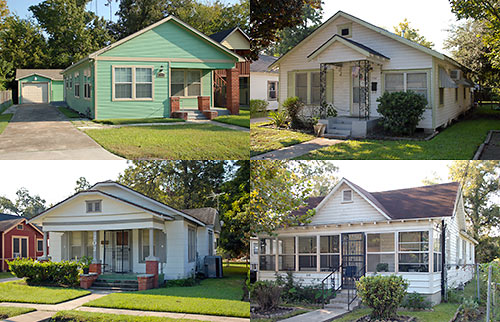
A collection of a couple dozen or so bungalows along E. 31st 1/2 St. between Yale and Cortlandt in Independence Heights just a block or so north of the 610 Loop is the city’s newest historic district — and perhaps the one with the most colorful name: Starkweather. The subdividing of the neighborhood predates the establishment of Independence Heights as an actual independent city in 1915, but most of the homes were built between the late 1920s (when the city was annexed by Houston) and the 1940s. They were originally marketed to the African American community in the neighborhood. Here’s a map:
***
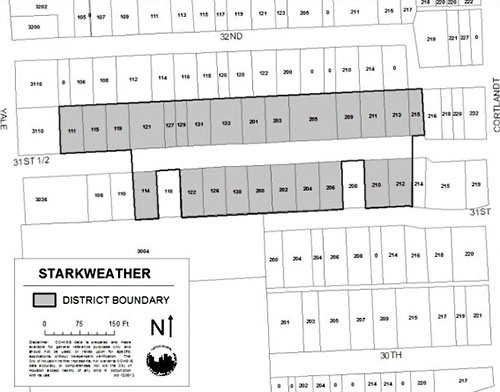
City council voted to approve the historic-district designation this morning.
Photos and map: Planning and Development Dept.


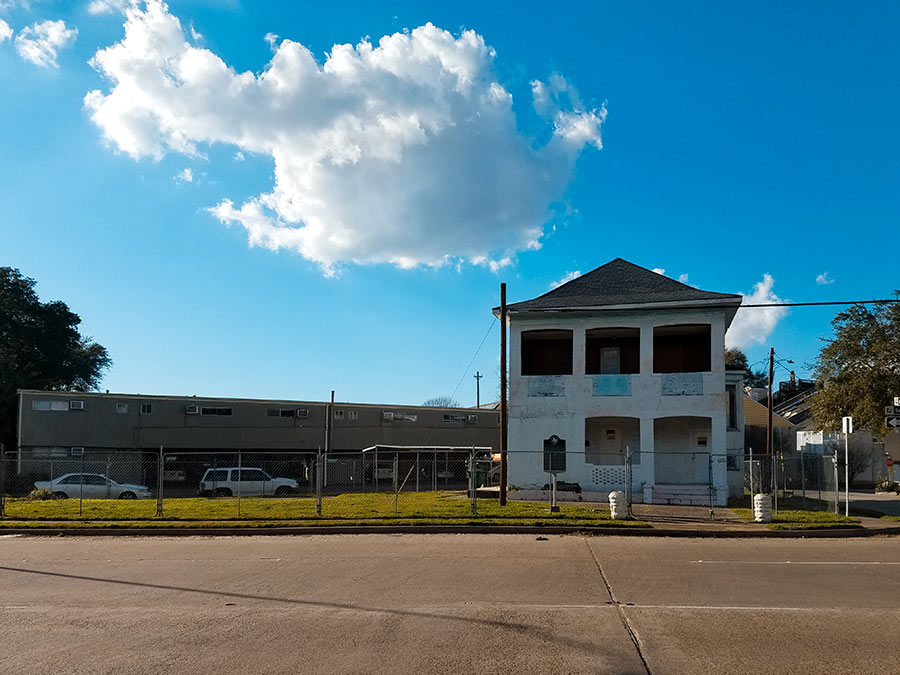
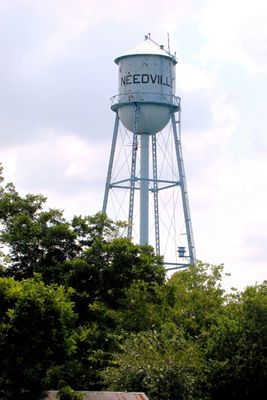
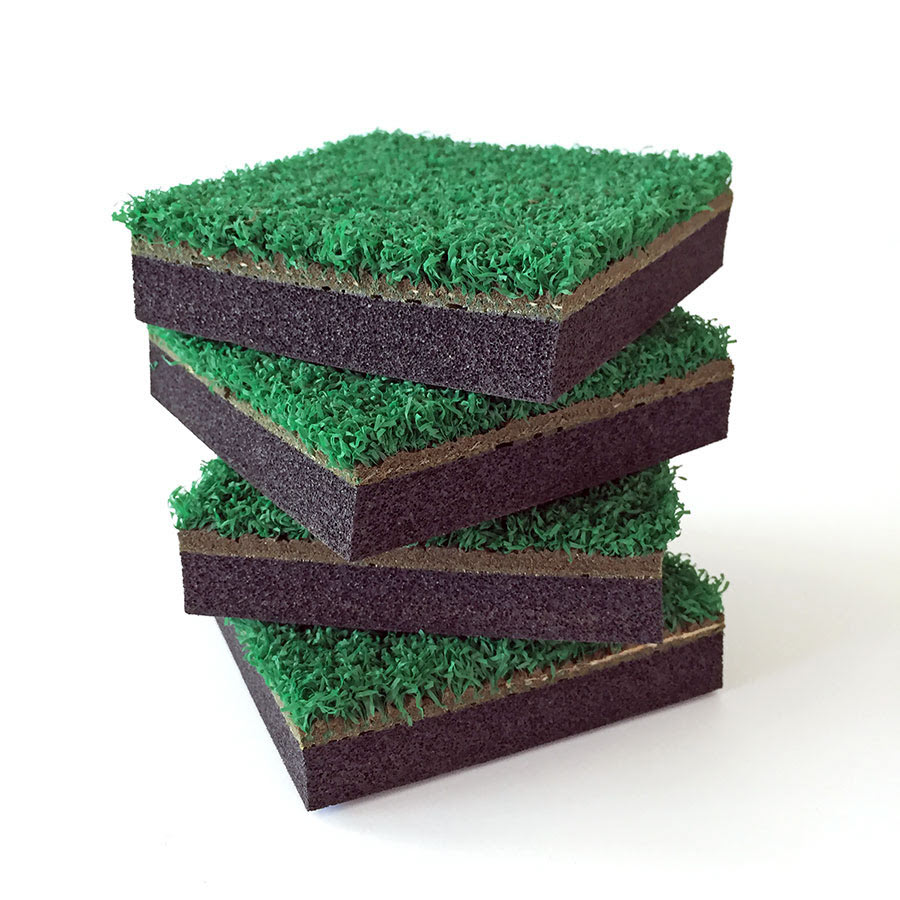
Aww, cute.
I love the idea of historic districts when the homes are well kept. I have just been to too many homes with leaning walls and major mold/sewage issues to consider this an option in delapidated areas on the east/north east sides of town. Maybe the west is better.
I’m all for preservation and I love a cute bungalow, but come on, these houses look really poorly built and most seem completely void of style–I hope preservation doesn’t go all PC and actually tries to save areas that have quality structures and some actual historic merit, I mean late 20’s into the 40’s and cheap, style void structures–that’s historic and worth preserving?–
Awesome!
Lookin’ good.
So adorable. :D
They look well kept to me and the vote by the owners of the properties to protect them means they value their homes. Isn’t that what matters? Just because something isn’t worth millions or isn’t desirable to the Shannon set doesn’t mean they don’t matter.
It’s worth noting that Preservation Houston completed the significance statement and the survey for Starkweather. They have been working in Independence Heights with property owners there for several years. Starkweather Historic District allows the residents of Houston to better understand this historic African-American neighborhood (Independence Heights is listed on the National Register of Historic Places). The small Starkweather subdivision was chosen because the houses are in good condition and, most importantly, the property owners desired the protection.
Preservation is not just about style. It is about community, and can also be about shaping your community’s future. That’s what these residents have done.
With the proliferation of mind-numbing townhouses, it is great to see this stake-in-the-ground. These humble homes will be appreciated more and more in the future.
If this is the second Historic District outside the loop, what’s the first?
Good Work Starkweather & Independence Heights! I’m glad they are being proactive and getting this before townhomes blitzkrieg the neighborhood. I hope it inspires folks in other historic areas to protect their neighborhoods too.
I hate to ask, but what happened to the two lots not included in the district? Makes the map look like a snaggletoothed sardonic grin.
Love that the neighborhood has done something to try to preserve their history. But if these two were “holdouts”, then good for them too and good for the whole process in that it appears that if someone didn’t want “in”, they weren’t forced “in”. Unlike what has happened in other parts of the inner loop.
I checked out google maps, and there seem to be two empty lots where the 2 lots not included in the historic district designation are (the map images seem to be from 2012).
Phillip, Glenbrook Valley (the only mid-century) historic district is the other outside the loop…
I say if these guys want to get together and put limitations on themselves in order to keep their neighborhood the way it is forever, that’s great. a-okay with me.
.
The downside to this is what we have here in Westmoreland. Near my house we have a historic home that’s been empty for as long as I can remember. It’s just rotting away. I try to save a lot of janky falling down stuff, but even I think this is beyond repair. You can’t tell from the street view but it’s pretty bad: (Street view pic: http://goo.gl/maps/UOmdF)
.
Problem is you can’t tear it down. But you can’t really fix it either. So it’ll sit. For who knows how long.
.
So while I somewhat see the point in making a historic district to keep the ‘vibe’ of the area, there needs to be some middle ground that allows something like this to be knocked down and replaced. And yes, there might be a process to get “permission” to do it but I assume that’s no fun and has no guarantee. So who’s going to buy it with the thought they’ll knock it down and build something else (appropriate for the area of course) in it’s place when they have no idea if they’ll be able to? That’s what worries me about these districts. I always have a built in bias about not being able to do what I want with my property. Or having to go to some government committee for permission.
@Cody: 303 Hawthorne is actually a great example of how the historic preservation ordinance can save significant historic structures. 303 Hawthorne is owned by the Westmoreland Preservation Alliance, a 501c3 organized to help preserve historic homes in the Westmoreland neighborhood. The house is not in good condition, but it is not so bad that it cannot be saved. I have seen much worse get beautifully restored. Without the ordinance, 303 Hawthorne would have been demoed and replaced with town homes. The ordinance gave the house a chance to be reborn.
Old School: I know all about it. I know the guy that bought 311 Hawthorne apartments next door, and that house came with it. The guy that bought the apts then sold the home off to another guy I know that’s part of that Preservation group (used to be my neighbor – really good guy — helped me with 219 W. Alabama actually).
.
Problem is that sale took place (looking it up…) mid 2011. So almost 3 years ago. It’s just sitting there (wanna guess how many red tags that place would have if I owned it?)
.
I’m not saying the city should pester the owner with red tags, nor am I saying they “need” to do something with it. IMO it’s their property, they can let it rot and fix it in their own timeline. However, my guess is after a 3 years of doing nothing, there is a reason for the inaction. They wouldn’t just let that thing sit (and get worse) if they were able to fix it up. They had a few contractors come out right after close but nothing came of it. My guess is they all said “Nothing we can do” or the bids were so high it just doesn’t make sense. At a point we have to admit that even if something CAN be saved, we can’t FORCE someone to if the costs make it impractical. Do you agree?
.
Personally (and selfishly) I’d much rather see that home restored than knocked down. I like the place. But eventually we have to have a Come-To-Jesus moment and decide if it’s going to happen or not. If it’s not going to happen, then admit it and knock it down. Put a park there or something that is deemed “appropriate” (like the town-homes almost across the street). But letting it just sit there should be sort of sad to people that respect those old places.
There’s good and bad in historic preservation. The best historic preservation differentiates between neighborhoods and buildings. At the neighborhood level, there are strict strict controls on lot subdivision, building heights, setbacks, tree preservation, and sidewalks – so that new construction fits in the urban fabric. In Paris, France, you can design a totally new and modern building on a boulevard, as long as it continues the street wall and meets the mansard roof setbacks of its neighbors. (At least, it’s how it was 20 years ago when I was studying architecture in Paris.)
.
For certain historic buildings, there are strict requirements for style and color and all of that. But it doesn’t extend through the whole historical neighborhood. Unfortunately, the differentiation seems lost here in the States. In other cities (New York in particular) they strictly control the details of any building that gets built in a historical district. It’s a real pain in the ass for the architects, and expensive for the owners.